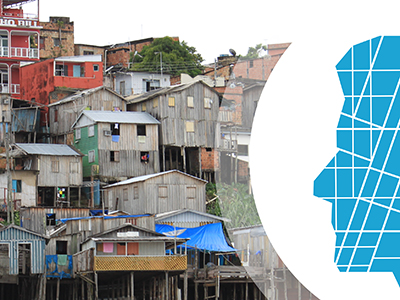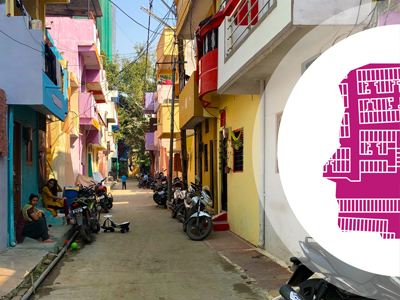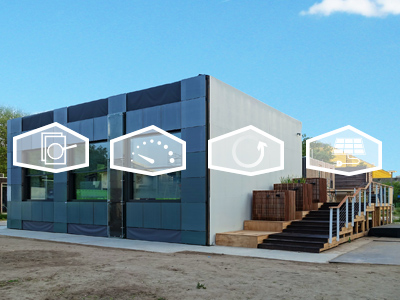Overview
Discover how urban design can help tackle inequality and socio-economic segregation in cities. Learn how to use analytical tools to measure these two phenomena and make urban design part of the solution.
Urban design, inequality and segregation are strongly connected.
Cities around the world, from the Global South to the Global North, are facing a rise in inequality and socio-economic segregation. The wealthy are increasingly concentrating in the most attractive urban areas and poverty is spreading to the suburbs. Rising levels of segregation have major consequences for the social sustainability of cities and leads to unequal life opportunities depending on where in the city you live.
In this course, aimed at a broad range of professionals, from urban planners and architects to geographers, you will learn what the main drivers and indicators of urban inequality and segregation are, using examples from cities from all over the world. You will learn how segregation is measured, how to interpret the results of the analyses of segregation and how to relate these insights to urban design. With this knowledge, you will be able to analyze how these issues may be affecting your local environment.
Additionally, we will present some historical examples of how urban design has played a role shaping spatial inequality and segregation in a selection of case study cities. This will help you to get a better understanding of how urban design can reduce spatial inequality and segregation.
The course is taught by the editors of the new SpringerOpen book "Urban socio-economic segregation and income inequality. A global perspective" and senior experts from the Urban Design section of TU Delft, which is ranked number 2 in the QS World University Rankings in the field of Architecture.
After taking this course you will be able to:
- Identify the main drivers of urban inequality and socio-economic segregation and the links between them
- Understand how segregation can be measured
- Examine the consequences of urban inequality and segregation based on the case studies presented
- Evaluate the urban inequality and segregation aspects of your own urban context
- Develop urban design and policy solutions to suit your own urban context
Details
Course Syllabus:
Week 1: Introduction
In the first week you will learn about the key concepts of this course – inequality, segregation, the inclusive city and urban design, as well as how these concepts relate to each other. Global segregation trends will be explained and illustrated through case studies. We will discuss how urban design can help to reduce spatial inequality in cities. By sharing the experiences of your peers, you will find out about differences in various parts of the world.
Week 2: The vicious circle of segregation
The second week focuses on the connectedness of segregation in different domains of daily life: places of residence, work, schools and during leisure time. The concept of a vicious circle of segregation helps us to understand these connections. We further discuss the role of inequality in producing and reproducing segregation, and how place-based, people-based and connectivity-based policy responses can help to break this circle. You will find out that there are many ways to measure segregation and learn how to interpret segregation indices.
Week 3-5: Regional, city and neighborhood scale
In the parallel modules in weeks 3-5, you will be introduced to the multiple relationships between the physical form of cities and the creation of an inclusive living environment on three different urban scales: regional, city and neighborhood. Inclusive cities must provide all citizens with equal access to public resources, including opportunities to participate in the planning and governance of space. Dutch case studies in which methods of analysis are demonstrated will enable you to assess an urban environment's potential for inclusivity.
- The regional scale
On the regional scale we will introduce design principles and show how these may influence concrete proposals at the local level. Even though the term 'regional design' may seem overly ambitious or even impossible, examples are given that explain the scope of the term and its importance in policy making and design practice. With the help of practical examples you will become acquainted with long term effects of regional planning, the importance of developing and evaluating scenarios and other aspects of regional design processes. - The city scale
On the city scale we focus on the interdependencies of the physical form of cities and their inclusive qualities. Ensuring access to necessary public resources or services, such as education and affordable housing, is an essential part of inclusive city design. You will learn how to analyze and assess the physical form of the city and its qualities, employing methods of urban spatial analysis. The module will emphasize urban borders and connectivity between neighborhoods, the distribution of local urban centers, and the diversity of housing types. - The neighborhood scale
On the neighborhood scale we focus on creating inclusive public spaces and neighborhoods. The way the city is designed and experienced from a perspective at eye level is strongly related to design decisions on other scale levels and vice versa. You will learn how to analyze movement patterns within neighborhoods as well as interventions in the public domain.
Week 6: Final assignment
Our shared goal is to build inclusive cities all over the world. In week 6 you will work on the final assignment with reference to your own urban context. You will bring together challenges and solutions to address inequality and segregation, using theories and tools presented during the course.
Week 7: Re-connect
In the last week we will re-connect and learn even more from each other. We will look back at the methods and design concepts offered in the course, at the solutions you developed for your own urban context, your vision of an inclusive city and your views on the role that urban design can play in breaking the vicious circle of inequality and segregation..
License
Unless otherwise specified, the Course Materials of this course are Copyright Delft University of Technology and are licensed under a Creative Commons Attribution-NonCommercial-ShareAlike 4.0 International License.
Qualifications
Chartered Engineering Competences
All our online courses and programs have been matched to the competences determined by KIVI’s Competence Structure, a common frame of reference for everyone, across all disciplines, levels and roles.
These competences apply to this course:
- A1: Extend your theoretical knowledge of new and advancing technologies.
- B2: Conduct appropriate research, and undertake design and development of new and creative engineering solutions.
- E3: Undertake engineering activities in a way that contributes to sustainable development and a circular economy.
Admission
This is a Massive Open Online Course (MOOC) that runs on edX.
Prerequisites
We recommend for you to take the Rethink the City MOOC as an introduction to this course.


